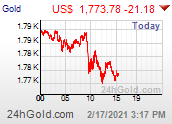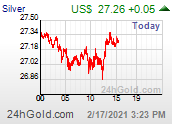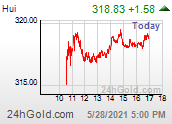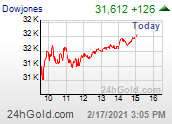Religious motto returns to new coins
by Dave Felice for DenverDirect
The country’s newest presidential dollar coins show how religious interests influence congressional decisions. The slogan “In God We Trust” has been moved from the edge of the coin to the bottom of the coin’s face. With little general public and media notice, legislation by Kansas Republican Senator Sam Brownback and West Virginia Senator Robert Byrd, a Democrat, was included in the Consolidated Appropriations Act of 2008. Section 623 of the lengthy legislation directed the Treasury Department to move the slogan either to the front or back of the coins “as soon as is practicable after the date of enactment of this Act.” Brownback has a reputation as an ultra-conservative advocate of what some consider “religious” issues. Byrd is known for sometimes taking unusual positions. When the coins were first issued, religious activists complained that the slogan was not prominent enough on the edge of the coin. Before the edge inscription became more widely known. Some even criticized the U.S. Mint for omitting the slogan. A production error at the Philadelphia Mint resulted in the issuance of some George Washington coins without the edge inscription. A few critics complained this was a deliberate attempt by the Mint to eliminate the slogan. More zealous opponents suggested not using the coins as a protest against the original design. New coins, new design The first presidential “golden” dollar of 2009, featuring the image of William Henry Harrison, is starting to circulate in the Denver area. The slogan is at the bottom of the “face,” or head, of the coin, preceding the words “9th President 1841.” Three more presidential coins will be issued later this year. The Mint describes the new design as featuring “larger, more dramatic artwork, as well as edge-incused inscriptions of the year of minting or issuance, "E Pluribus Unum" and the mint mark "In God We Trust" will appear on the face of the coin starting in 2009.” In advance of the Brownback-Byrd amendment, The Christian Examiner newspaper stated: “Public pressure soon may send the motto back to the front or back of the coins.” The Examiner is a Baptist publication. In a later statement, Brownback said, “Since the colonial beginnings of the United States, citizens of this nation have officially acknowledged their dependence on God. It is important that our national motto, ‘In God We Trust,’ is prominently displayed on all of our currency. We should not relegate our heritage to the side.” Courts reject opposition In 2006, a federal judge in California ruled against Michael Newdow, an atheist and lawyer from Sacramento who contended the motto’s appearance on the coins violated his First Amendment rights. Newdow’s appeal included an argument for removing the words “under God” from the Pledge of Allegiance. A three-judge panel from the 9th Circuit Court denied Newdow’s claim that both references were disrespectful to his religious beliefs. Slogan grows from Civil War fervor In spite of common belief that the slogan originated with the formation of the country, the Treasury Department says use of the motto stems from increased religious sentiment during the Civil War. “Secretary of the Treasury Salmon P. Chase received many appeals from devout persons throughout the country, urging that the United States recognize the Deity on United States coins,” the department says on its website. According to The Christian Examiner, the first recorded appeal came in an 1861 letter to Secretary Chase from a minister from rural Pennsylvania, “noting that recognition of ‘the Almighty God’ had been ‘seriously overlooked’ on the nation's coins.” The newspaper says the minister suggested that placing the words “God,” “liberty”, and “law” on coins would “relieve us from the ignominy of heathenism” and “place us openly under the Divine protection we have personally claimed.” In response, Chase wrote “The trust of our people in God should be declared on our national coins.” He told the director of the Philadelphia Mint to prepare a motto “expressing in the fewest and tersest words possible this national recognition.” Chase approved the words “In God We Trust” and the slogan was stamped on the 1864 two-cent coin. Dollar coins not popular The United States is the only industrialized nation which still has unitary paper currency, the famous “Greenback Dollar” with the image of George Washington on the front. Canada has a brass-colored dollar about the same size as the U.S. “small” dollar coin. Canada also has a two-dollar coin, and hasn’t used a paper dollar for over two decades. Australia and New Zealand both have one-dollar and two-dollar coins. The European Union has one-euro and two-euro coins. The five-euro has always been the smallest euro bill. The United Kingdom has one-, two-, and five-pound coins. The five-pound coin, known as a “crown” is about the same size as the old U.S. silver dollar. The original “small” U.S. dollar, featuring the image of Susan B. Anthony in profile, was unpopular because some people thought it looked too much like a quarter. The re-designed “golden” dollar, was issued in 2000. That coin featured a three-quarter image of Sacagawea, the Native American woman who guided the Lewis and Clark expedition. The Treasury Department started issuing the presidential golden dollars in 2007. Four coins are minted each year. The one-dollar coins can be used in most vending machines. However, even the newest parking meters are not all capable of accepting the coins. Denver Public Works reasoned that people would not use the dollar coins and purchased new parking meters with a coin slot only big enough for quarters. Consumers have complained they don’t want to use the coins because of weight. Many cash registers do not have a separate compartment for dollar coins. So far, the Treasury Department has rejected calls to eliminate the paper dollar as a way of stimulating coin use. Some defenders of the paper dollar have even suggested that it would be disrespectful of the first president to eliminate the dollar bill.











0 comments:
Post a Comment